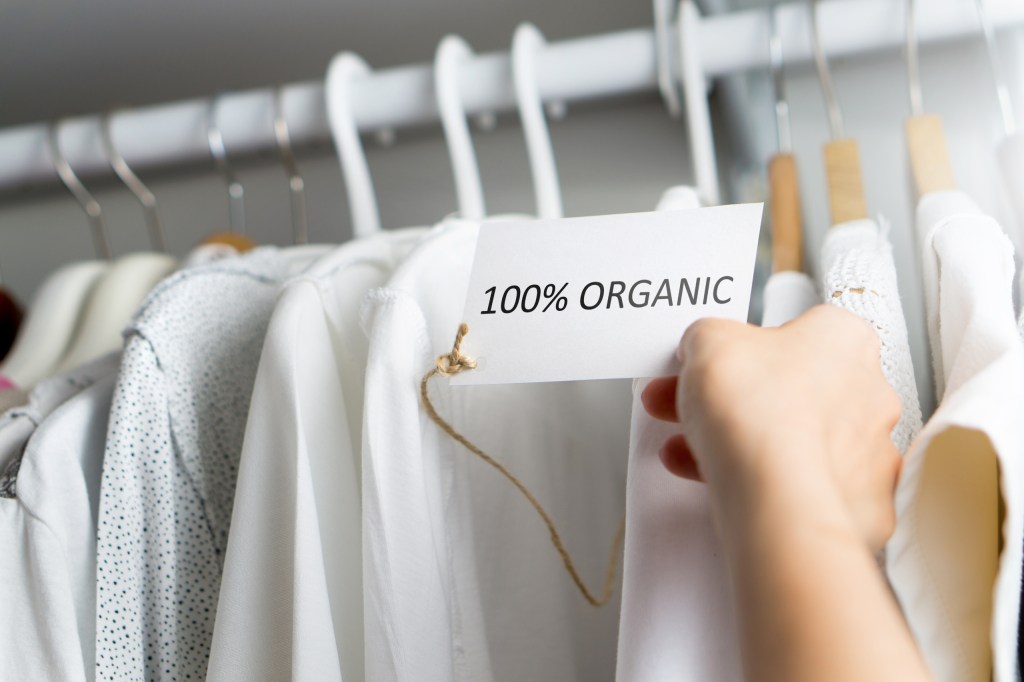Whether you’re a clean beauty veteran or new to the trend, it’s easy to be led astray by the misleading marketing of your favorite products. Unfortunately, many companies brand their beauty products as “clean” when they are in fact created with toxic ingredients, embedded with microplastics, or sourced unethically. This is because the term “clean” is not regulated by the FDA, so each company uses its discretion when marketing the product.
So, next time you’re in the beauty aisle looking for a new shampoo or reusable sponge, fact check the source and materials that create the product in order to ensure you’re obtaining the best of the best when it comes to ethical and clean items.
Check the first five ingredients of chemical-based products
When purchasing any chemical-based product, begin by referencing the first five ingredients. The first five ingredients of any product make up the majority of its contents. so if you notice a synthetic fragrance or other irritants among the ingredients, it should not belong in your clean beauty journey.
Sometimes, it can be difficult to decipher what some of the chemicals mean. After all, not everyone knows what sulfate is. And what about benzoin extract or menthoxypropanediol?
An easy way to decide whether or not you should purchase a certain chemical-based product is to do a quick google search of the first five ingredients. You’ll discover several reputable medical sources verifying the quality and safety of each chemical. Additionally, you can perform a more specific search like “is sulfate a good ingredient in shampoo?” to determine the safety and effectiveness of your product. If all else fails, reach out to a healthcare professional who can set you on the right path.

Use dictionaries and databases
Unfortunately, searching for the first five ingredients of every product you choose from can be time-consuming and frustrating. While you may eventually come to recognize certain common ingredients, a lot of time and attention is required to remember them all.
A great way to save time on researching chemicals in products is to use online ingredient dictionaries and databases.
Paula’s Choice
Paula’s Choice is a skincare and dermatology resource that provides an in-depth discussion on chemicals in skincare products. The chemicals are ranked from worst to best and provides a description of every chemical compound in the online dictionary.
However, Paula’s Choice does not account for environmental toxicity. For example, oxybenzone is a safe chemical present in sunscreen thanks to its UV protective agents. However, it is also a root cause for coral reef bleaching. While Paula’s Choice includes this controversy in the description of the chemical, it is also listed on the site as a “best” ingredient. So, while this is a top tier database for body-safe chemicals, you should continue to research the environmental implications of each chemical if that is a must on your clean beauty checklist.
Earth Hero
If the above applies to you and you’re looking for products that are body and Earth healthy, Earth Hero is the database for you. Earth Hero partners with several brands such as Pela Case, 4Ocean, DivaCup, Tentree, and more to provide a marketplace for sustainable goods.
That said, Earth Hero is not partnered will all organic or ethical brands, so their partners do not constitute the end-all-be-all list of sustainable brands. It is, however, an accessible resource to double-check a product’s sustainability.
The websites for all brands on Earth Hero are linked, so you can research each brand’s story and ingredient list to determine if it’s product is right for you.

Watch out for green-washing
Fact-checking is a necessary step when purchasing non-toxic and ethically sourced products because many companies use the trend of “green” marketing to boost sales. Some companies promise clean and green products, but their standards for clean beauty might now align with your own.
On your next trip to the beauty or department store, remain cautious and conduct your own research on products before you reach the cash register or click that add to cart button. Green-washing is an unfortunate outcome of the growing clean beauty trend, but a little bit of fact-checking will ensure you’re buying only what’s best for you.
Disclaimer: BlissMark provides information regarding health, wellness, and beauty. The information within this article is not intended to be medical advice. Before starting any diet or exercise routine, consult your physician. If you don’t have a primary care physician, the United States Health & Human Services department has a free online tool that can help you locate a clinic in your area. We are not medical professionals, have not verified or vetted any programs, and in no way intend our content to be anything more than informative and inspiring.



